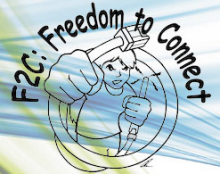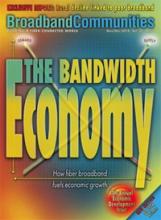Freedom to Connect - Long Term Muni Strategies
If you were not able to attend Freedom to Connect in New York on March 2 - 3, you can now view archived video of presentations from Chris and others.
Now that the FCC has made a determination that may change the landscape of Internet access, it is time to consider the future of municipal networks. In this discussion, Chris discusses passive infrastructure, including dark fiber and open access models as a way to encourage competition on the local level. Chris also looks at financing municipal networks in a fashion that takes into account public benefits created by fiber. He suggests steps elected officials can take now that will contribute to long term ubiquitous access in their communities.
You can also watch videos from other presenters including Joanne Hovis, Hannah Sassaman, and Jim Baller at the F2C: Freedom to Connect 2015 Livestream page.
Chris's presentation is posted here and runs just over 20 minutes:



